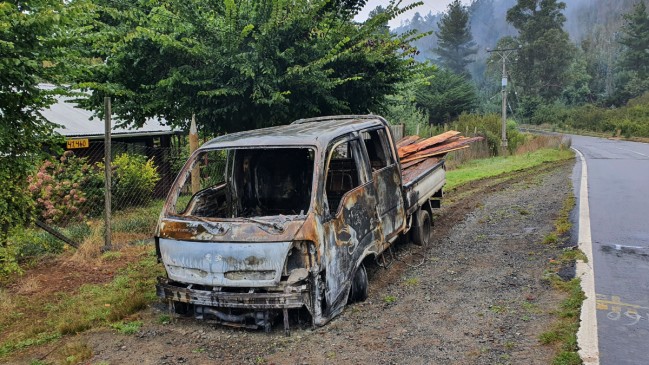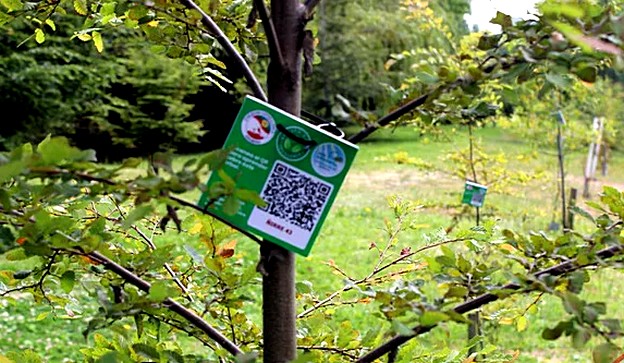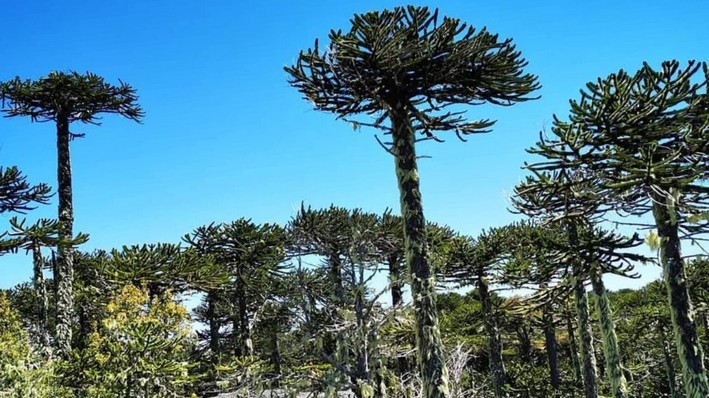Progress in Preparing the Site for the Future UdeC Botanical Garden
- The harvesting of exotic tree species continues these days in the hills adjacent to the University of Concepción. This is a crucial step that will make way for the first botanical garden of UdeC, as part of the ex-situ conservation line of the Campus Naturaleza project.
It is currently a small area, but these are the first steps toward implementing the initial actions for the future botanical garden of the University of Concepción. The harvesting will cover 6 hectares in the hills bordering the university, currently populated by exotic tree species. This space will be part of the ex-situ conservation of the Campus Naturaleza project, a modality aimed at preserving species (flora, fauna, fungi) outside their natural distribution.
Before the harvesting began, the presence and distribution of small groups of native trees and shrubs—still surviving beneath the dominant eucalyptus—were identified. This was a voluntary measure established by the university, supplementing the Management Plan approved by CONAF in March 2024.
Dr. Cristian Echeverría Leal, Director of the Campus Naturaleza project at the University of Concepción, explains, "This was done to preserve them (native species) post-harvest and to aid the establishment of native trees that will be part of the ex-situ collection of threatened Chilean Nothofagus. Various scientific studies, some of which we have participated in, agree that the climate crisis and human-induced disruptions could seriously impact the survival ofthe three species of this genus in South America, endemic to Chile: Nothofagus alessandrii (ruil), endangered; N. glauca (hualo); and N. macrocarpa (roble de Santiago), vulnerable. These threatened and vulnerable statuses urge us to make every effort to conserve these species, in this case, outside their natural range, which spans between the Metropolitan and Maule regions," the UdeC academic explains.
GrowingNothofagus
Although the harvesting is the first tangible action of the ex-situ conservation for the Campus Naturaleza project at the University of Concepción, the process began much earlier. Today, theNothofagusthat will populate the hectares starting in July of this year are growing in the nursery of the Forestry Institute (Infor). This required collecting seeds across the natural distribution of these species, a task involving various professionals from the institutions part of the project"Conservation and Restoration of Threatened Nothofagus Species in South America."
This initiative, funded from Switzerland by the Franklinia Foundation and led by the University of Concepción through the Landscape Ecology Laboratory, highlights the international scientific community's concern for conserving these emblematic tree species of the Southern Hemisphere.
In this context, Manuel Acevedo Tapia, a researcher at Infor—one of the institutions involved in the conservation project forNothofagus,explains that a key aspect is preventing related individuals (trees) from the same site from interbreeding. This increases the chances of plant survival.
"Plant production considers the location of seed collection sites. The idea is to account for the mother plants and their seed sources to avoid inbreeding when establishing individuals from the same mother in a common site. The goal is to produce plants with records, later transferring them to Campus Naturaleza based on tracking seed sources and origins."
Preparing Land for Ex-Situ Conservation
Harvesting operations are carried out with consideration for native species in the area, explains Juan Emilio Espinoza, Head of Properties and Forest Management at the University of Concepción. "To date, about half a hectare remains to be harvested, with work divided into two stages—the second to begin when weather conditions improve. Here, controlled felling is used within the plantation to minimize impact on native clusters in the stand. The native species present are mainly boldo, litre, and peumo, so every effort is made to protect them. No native species have been cut under any circumstances; the goal is to preserve as many native species as possible to support the upcoming process in the area."
In addition to standard harvesting tasks, workers were trained, and the bidding terms required preserving as many native species as possible. "However, some disturbance is inevitable, as we are felling trees 20 to 30 meters tall, so some native vegetation may be damaged—though we are trying to prevent this."
The area undergoing harvesting is private property (owned by the University of Concepción). However, it is known to be used for recreation and sports by the local community. In this context, the university urges people to avoid these areas and take safety measures to prevent accidents.
Source:noticias.udec.cl

















